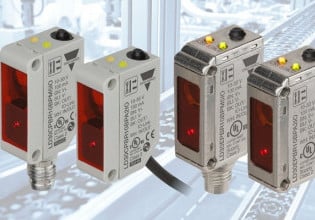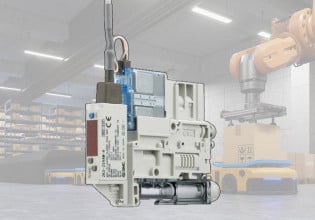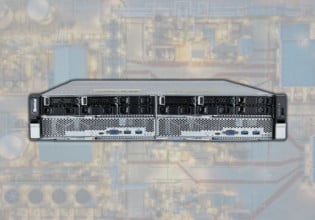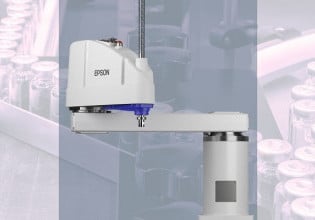What are Cartesian Robots?
This article offers an introduction to cartesian (gantry) robots, including how they work and the applications they're created for.
Cartesian coordinate geometry is an excellent method for mapping three-dimensional space in a simple, easy-to-understand numerical system. In the Cartesian system for three-dimensional space, there are three coordinate axes that are perpendicular to each other (orthogonal axes) and meet at the origin.
The three axes are generally referred to as the x-axis, y-axis, and z-axis. Any point in three-dimensional space is represented by three numbers as (x, y, z). X represents the distance of the point from the origin along the x-axis, y is the distance from the origin along the y-axis, and z is the distance from the origin along the z-axis.
Cartesian (Gantry) Robots
Mechatronic robots that use linear axes for movement are called Cartesian robots, linear robots, or gantry robots. Gantry robots look similar to gantry cranes and operate similarly. But gantry robots are not limited to lifting and moving functions. They can have custom functionality as per the requirement.

Figure 1. A Cartesian robot arm. Image courtesy of Bosch Rexroth.
Cartesian robots have an overhead structure that controls the motion in the horizontal plane and a robotic arm that actuates motion vertically. They can be designed to move in x-y axes or x-y-z axes. The robotic arm is placed on the scaffolding and can be moved in the horizontal plane. The robotic arm has an effector or machine tool attached to the end of the arm depending on the function where it is used.

Figure 2. A gantry robot. Image courtesy of AMMC.
Though Cartesian robots and gantry robots are used interchangeably, gantry robots generally have two x-axes while Cartesian robots will have only one each of the two/three axes (according to the configuration).
How Do They Function?
Cartesian robots only move through linear motion, generally through servomotor drives. The linear actuators used can be in various forms according to the specific application. The drive system can be belt-driven, cable-driven, screw-driven, pneumatic-driven, rack-and-pinion-driven, or linear-motor-driven. Some manufacturers provide completely pre-made Cartesian robots that can be implemented without any modifications. Other manufacturers offer different components as modules, allowing the user to implement a combination of these modules according to their specific use case.
The robotic arms themselves can be equipped with “vision” or can be “blind” in operations. They can be attached to light sensors or cameras to identify the objects before executing an action. For example, Cartesian robots can be used in laboratories to pick and move samples. Computer-aided vision can be used to recognize the test tube, pipettes, or slides and the arm can grab the object according to the position data conveyed from the camera.
The advantage of Cartesian robots over other robotic systems, like six-axis robots, is that they are very easy to program. A single motion controller can handle the movement logic for a Cartesian robot. The robots have only linear motion, enabling ease of control. There is no need for a complex array of PLCs and microchips for the motion control of Cartesian robots. The same attribute helps to make programming the movement of the robot easier.
Characteristics and Advantages
Cartesian robots have a higher payload carrying capacity compared to their equivalent six-axis robots. This, combined with the lower cost and ease of programming for linear robots, makes them suitable for a large variety of industrial applications. Gantry robots, which are essentially Cartesian robots with supporting scaffolding, can carry even higher payloads. The range of movement for linear robots can be extended by adding compatible modules to the existing mechanism. This modularity in Cartesian robots makes them much more versatile and has a longer life in an industrial setting.
Cartesian robots also exhibit a high level of accuracy and precision compared to their rotary counterparts. This is due to the fact that they only have linear motion and no need to accommodate rotary motion. Cartesian robots can have tolerances in the range of micrometers (μm), whereas six-axis robots generally have tolerances in the range of millimeters (mm).
Applications for Cartesian Robots
The versatility, lower cost, and ease of programming make Cartesian robots viable for many applications in industrial settings. Let us have a look at some of them.
- Pick and place: The robotic arm is fitted with some variation of vision device to identify different components from a carousel or conveyor belt. The arm can pick these objects and sort them into different bins. Picking and soring can be done by a single robotic arm.

Figure 3. A pick-and-place machine.
- Process-to-process transfer: In a production line there will be instances where goods in the process need to be transferred from one location to another. It can be done using dual-drive linear robots. They can be used with vision systems or time-synchronization depending on the rest of the process.

Figure 4. Process transfer
- Assembling system: When the same steps have to be repeated over and over to assemble the parts of a product, linear robots can be used to automate the tasks.
- Application of adhesives and sealants: Many production processes involve the application of adhesives or sealants between parts. It is used in large automobile manufacturing to small electronic gadget production. Adhesives and sealants are to be applied in very precise quantities and the correct location. The robotic arm of the linear robot can be connected with a high-precision fluid dispenser and adhesives and sealants can be applied with high accuracy.
- Palletizing and depalletizing: Packing uses pallets to transport goods with ease. Cartesian robots can be used to automate both placing products on pallets and taking them from pallets.
- CNC machine tooling: Computer numeric controls-based machines are used to create products according to designs made in engineering design software. CNC machines widely use linear robots with different tools attached to the robotic arms.
- Precision spot welding: Specialized welding is required in certain manufacturing processes. Linear robots with welding arms can achieve accurate welds in precise locations on the work surface. The high level of tolerance in the micrometers (μm) range is helpful in such applications.
There are many more industrial applications for linear robots. These include dispensing agents, assembler and tester base machines, insertion units, stacking devices, sealing automation, material handling, storing and retrieving, cutting, scribing, and sorting.






